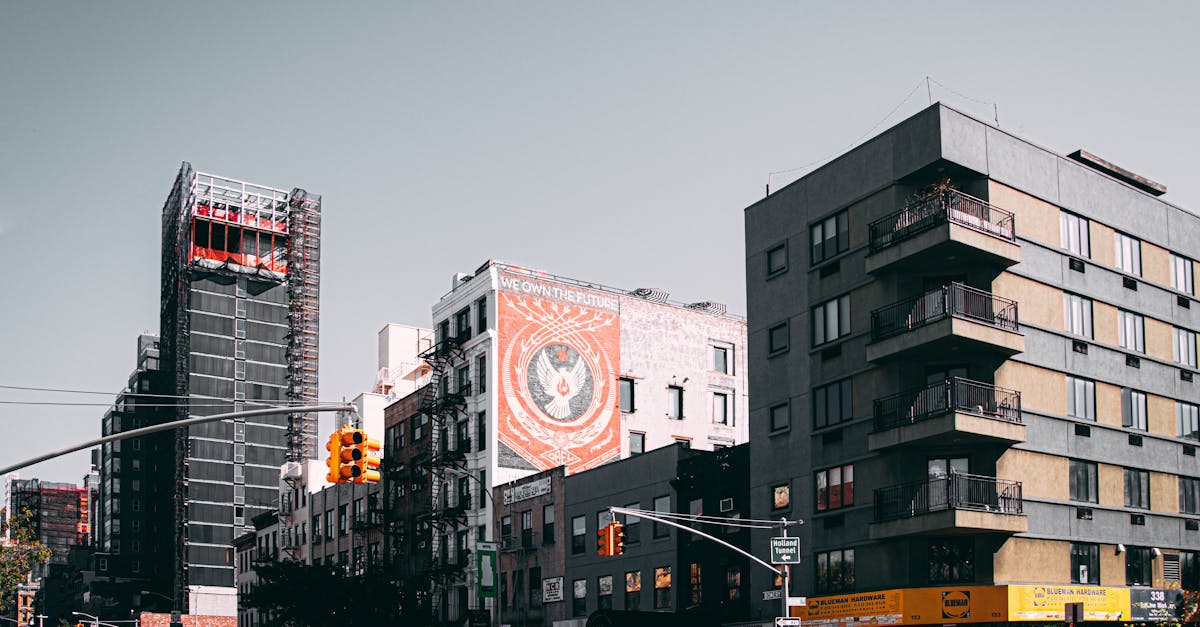The article «Exploring Architectural Color Trends of the Future» delves into the evolving landscape of architectural color trends that are set to shape the future of design. It highlights the significance of color psychology in influencing feelings and experiences within spaces. Key themes include the rise of soft and earthy tones that evoke serenity, as well as bold and vibrant hues that express individuality. Additionally, the article emphasizes the importance of sustainability, showcasing how natural colors and eco-friendly materials are transforming design choices. Readers will gain insights into how these trends can enhance both aesthetics and functionality.
Current Trends in House Painting and Remodeling
Transforming living spaces has become an essential priority for homeowners looking to reflect their personal style and enhance their well-being. The art of painting and remodeling is not just about aesthetics; it’s a reflection of our evolving lifestyles and preferences. With emerging color trends and innovative materials, the world of home design is experiencing a renaissance that invites creativity and functionality.
As we delve into the latest trends, understanding the significance of the NCS Color Trends, particularly the insights from the NCS S 2050-R, becomes invaluable. These trends are not mere selections of colors; they offer a window into our collective mindset, emphasizing the importance of serenity and connection with nature in our homes. Whether it’s the calming blues and greens or bold statement colors, there’s a palette that resonates with every individuality.
In this article, explore the practical applications of these trends, discover the most sought-after colors, and learn about sustainable materials that assure long-lasting beauty and style in any home.

| Feature | Details |
|---|---|
| Natural Hues | Use of earthy tones like terracotta and muted greens to evoke tranquility and warmth. |
| Bold Accents | Incorporation of vibrant colors such as bright corals and deep purples for self-expression. |
| Sustainable Choices | Preference for eco-friendly materials and colors that reflect their organic nature. |
| Minimalism | Focus on clear lines and simple palettes to create open and airy spaces. |
| Technological Influence | Integration of colors that respond to digital aesthetics, including luminescent shades. |
| Transitional Spaces | Colors that flow between indoor and outdoor environments to enhance connection with nature. |
Current Trends in House Painting and Remodeling
In the dynamic landscape of home improvement, the choices in colors, materials, and techniques play a crucial role in creating welcoming and aesthetically pleasing environments. As homeowners seek to enhance their living spaces, it’s essential to stay informed about the latest trends in house painting and remodeling. This guide will explore current trends, innovative materials, and practical tips that can help transform any house into a modern sanctuary.
Understanding the Impact of Color Choices
Color has become an essential element in home design, shaping not only aesthetics but also emotional well-being. Within the context of the NCS Color System, which systematically categorizes and analyzes color use, recent reports like NCS S 2050-R reflect the evolution of color trends in contemporary design. The insights drawn from these trends reveal a society increasingly leaning towards colors that evoke feelings of tranquility and a connection to nature.
Soft blues and earthy greens have emerged as favorite choices, creating serene spaces ideal for relaxation. These color palettes are perfect for bedrooms, living rooms, and wellness centers. In contrast, vibrant shades are making their way back into home design, energizing spaces like home offices and creative studios. Colors such as bright corals and deep purples not only express individuality but inspire creativity and innovation.
Emerging Color Combinations
Combining colors thoughtfully can result in stunning interiors that reflect personal style. Here are some current popular color combinations:
- Earthy Tones with Natural Accents: Hues like terracotta, muted yellows, and gentle browns mirror the outdoors and foster a warm, inviting atmosphere.
- Monochromatic Schemes: Using varying shades of a single color creates depth and sophistication without feeling overwhelming.
- Bold Contrasts: Pairing vibrant colors with neutral backgrounds creates dramatic effects, making furniture and decor pieces stand out.
Innovative Painting Techniques
As homeowners become more adventurous, innovative painting techniques are gaining popularity, enhancing the visual appeal of interiors. Consider the following techniques:
- Ombre Effect: This gradient coloring technique gradually transitions from one color to another, creating a soothing visual effect.
- Color Blocking: Utilizing two or more contrasting colors on walls or furniture can create a bold statement and highlight architectural features.
- Textured Finishes: Techniques such as sponge painting, rag rolling, or using stencils add unique textures that capture light differently, creating an eye-catching focal point.
The Importance of Sustainable Materials
The growing emphasis on sustainability is not only a passing trend but a fundamental shift in the way homes are remodeled. Homeowners are increasingly opting for eco-friendly materials that not only reduce environmental impact but also enhance the aesthetic appeal of their spaces. Here are some sustainable options:
Eco-Friendly Paints
Many manufacturers are now offering paints with non-toxic pigments and organic materials. These smart paints adapt to the light and surroundings, contributing to both functionality and aesthetics. Homeowners can choose paints that are low in volatile organic compounds (VOCs), ensuring better air quality and safer spaces.
Natural Flooring Options
In addition to paint, flooring is a significant aspect of remodeling projects. Consider the following sustainable flooring materials:
- Bamboo Flooring: Fast-growing and renewable, bamboo is a popular choice for its durability and stylish appearance.
- Reclaimed Wood: Utilizing wood from old structures not only offers a unique character but also minimizes deforestation.
- Cork Flooring: A renewable resource that provides excellent insulation and cushioning, cork is also resistant to mold and mildew.
Incorporating Technology into Home Design
Modern technology is reshaping the way homeowners approach remodeling. Smart home innovations not only enhance convenience but also contribute to energy efficiency. Here are some technologies to consider integrating into house renovations:
Smart Paints and Coatings
New developments in smart paints allow homeowners to manipulate their environment. These paints can change color based on temperature or lighting, adding an interactive dimension to home design. For instance, consider a paint that shifts to a cooler shade during hot weather, keeping the room feeling fresh.
Energy-Efficient Windows and Doors
Upgrading to energy-efficient windows and doors is another investment that pays off in the long run. Technologies such as smart glass that can tint on command or low-E coatings significantly improve thermal performance, reducing heating and cooling costs.
Integrated Lighting Systems
Contemporary lighting systems that can be managed via smartphone apps or voice commands offer flexibility and customization options for homeowners. These systems allow users to create ambiance through dimmers, color changes, and scheduling, enhancing both functionality and aesthetics.
By marrying the right color palettes, innovative materials, and cutting-edge technology, homeowners can significantly enhance their living spaces. Current trends not only focus on aesthetics but also address the emotional and practical needs of today’s homeowners. Remodelling and painting in accordance with these trends can lead to spaces that are not only beautiful but also enriching, embodying a harmonious blend of style and function.
For more insights on seasonal paint trends, visit TSPaintingPro. To learn about smart paints that adapt to light, check out TSPaintingPro’s guide.

Transform Your Home Today!
Ready to elevate your living space with stunning colors and thoughtful designs? Our expert team offers personalized painting and renovation services tailored to your needs. Enjoy a seamless process that prioritizes quality and satisfaction, making your dream home a reality.
Current Trends in House Painting and Remodeling
Practical Tips for Homeowners
- Choose Earthy Tones: Opt for colors like terracotta, muted yellows, and gentle browns to create a warm atmosphere in your home. These colors are reflective of nature and contribute to a relaxing environment.
- Incorporate Bold Colors: For areas that need a burst of energy, consider using vibrant colors such as bright corals and deep purples. These shades can enhance creativity and personal expression, especially in home offices.
- Utilize Eco-Friendly Paints: Switch to non-toxic paints and materials that not only protect the environment but also improve indoor air quality. Look for paints that use natural dyes and pigments.
- Experiment with Color Combinations: Don’t be afraid to mix and match colors. Consider using contrasting hues to highlight architectural features or create focal points in your living spaces.
- Prioritize Natural Light: Assess how natural light influences color appearance throughout the day. Test paint samples in different lighting conditions to ensure the best results.
- Embrace Textures: Incorporate different textures in your painting techniques, like sponging or rag rolling, to add depth and interest to walls.
- Plan for Sustainability: Keep in mind the lifecycle of materials used in painting and remodeling. Focus on sustainable practices that adhere to eco-friendly standards for long-term benefits.
Current Trends in Home Design
- Nurturing Nature: The trend towards biophilic design emphasizes incorporating natural elements and colors that reflect the surroundings, fostering a deep connection with nature.
- Holistic Spaces: Color trends are veering towards creating calming spaces—soft blues and greens are popular for their tranquil qualities, aiming to bring peace and balance at home.
- Personalized Spaces: With more remote work, personal flair in design is trending. More homeowners are choosing unconventional colors and decor to express their unique identities.
- Integration of Technology: Smart home solutions are being combined with innovative design, leading to tech-enabled spaces that focus on both functionality and aesthetics.
«`html
Frequently asked questions
Glossary of Key Terms Related to Current Trends in Painting and Home Remodeling
- Color Palette
- A selection of colors used in a particular design project, typically chosen to create harmony and visual interest.
- Sustainability
- The practice of using materials and processes that do not deplete resources or harm the environment, aimed at minimizing ecological impact.
- NCS Color System
- The Natural Color System (NCS) is a system for describing, identifying, and classifying colors based on human perception, widely used in design.
- Earth Tones
- Colors that are muted and resemble the natural colors found in soil, stones, and vegetation, often used to create a calming environment.
- Accent Color
- A bold or contrasting color used in a room to enhance and complement the main color scheme, adding interest and personality.
- Color Psychology
- The study of how colors affect human behavior and emotions, influencing design choices that cater to the intended atmosphere of a space.
- Eco-friendly Materials
- Building and decorating materials that are environmentally friendly, often made from recycled or sustainable resources, promoting healthier indoor air quality.
- Textured Finishes
- Surface treatments applied to walls or furniture to add depth and visual interest, making the design more dynamic and engaging.
- Bold Colors
- Vivid and bright colors that capture attention and can be used to express individuality and creativity in design.
- Remodeling
- The process of renovating or altering an existing structure or space to improve its functionality, aesthetics, or both.
Exploring Architectural Color Trends of the Future highlights the significant impact of color in design and architecture. Understanding the NCS Color Trends, particularly NCS S 2050-R, opens a dialogue about how colors not only enhance aesthetic appeal but also evoke emotions and convey a sense of well-being. The shift towards colors inspired by nature, alongside bold hues that express individuality, reflects societal needs for both comfort and self-expression. This knowledge empowers homeowners and designers alike to create spaces that resonate on a deeper emotional level, fostering environments that are both visually stunning and meaningful.
Recommendations for Exploring Architectural Color Trends of the Future
1. Embrace Nature-Inspired Palettes
Incorporating colors that reflect the elements of nature can create a warm and inviting atmosphere. These shades not only enhance aesthetic appeal but also promote a sense of stability and peace.
- Utilize soft blues to evoke tranquility and calmness in spaces designed for relaxation.
- Incorporate earthy greens to create a balanced environment that resonates with sustainability.
- Integrate terracotta and muted yellows to add warmth and comfort that mirrors natural landscapes.
2. Experiment with Bold Hues
Vivid colors can serve as a powerful medium for self-expression, particularly in creative spaces. They stimulate creativity and foster a unique identity.
- Consider bright corals and vivid greens for home offices or artistic studios to inspire energetic environments.
- Incorporate deep purples in accent walls or decor to create focal points that ignite passion and creativity.
- Choose a mix of playful colors that reflect individual style and personality, enhancing personal spaces.
3. Focus on Sustainability
As sustainability becomes crucial in design, selecting colors that symbolize eco-friendliness is key. This trend encourages authenticity in materials and finishes.
- Opt for natural dyes and non-toxic pigments in paints and finishes to maintain eco-friendly practices.
- Choose colors that echo organic materials to highlight the genuine textures and finishes used in construction.
- Prioritize brands that focus on sustainable production methods, ensuring a greener choice for design.
Transform Your Space Today!
Ready to elevate your home with stunning paint and renovation services? Our team of experts will work closely with you to bring your vision to life, enhancing both beauty and functionality. Experience the benefits of a revitalized space—contact us now for a personalized consultation!
Sophia Torres is the creative mind behind the most dazzling transformations at TS Painting & Restoration. With a strong background in interior design and a deep passion for tropical color palettes, she has helped hundreds of clients revitalize their spaces into vibrant and inviting environments. Born in Colombia and raised in Florida, Sophia brings a unique perspective to her work, blending Latin American influences with modern design trends.
Sophia’s vision of color goes beyond the conventional. She is known for her ability to create bold and unexpected combinations that reflect Florida’s natural beauty. Her focus on color psychology and strategic use of tones allows her to transform any environment, making each project a showcase of her clients’ personal style. On her blog, she shares practical tips on how to choose colors that not only beautify but also enhance emotional well-being and create harmony in the home.
When not working, Sophia enjoys exploring art galleries, experimenting with DIY projects, and finding inspiration in Florida’s lush landscapes. For her, design isn’t just about aesthetics; it’s about creating spaces that tell a story, reflect the identity of those who live there, and evoke positive emotions. At TS Painting & Restoration, Sophia is committed to helping homeowners discover how colors can transform their homes into true havens of tranquility and beauty.


